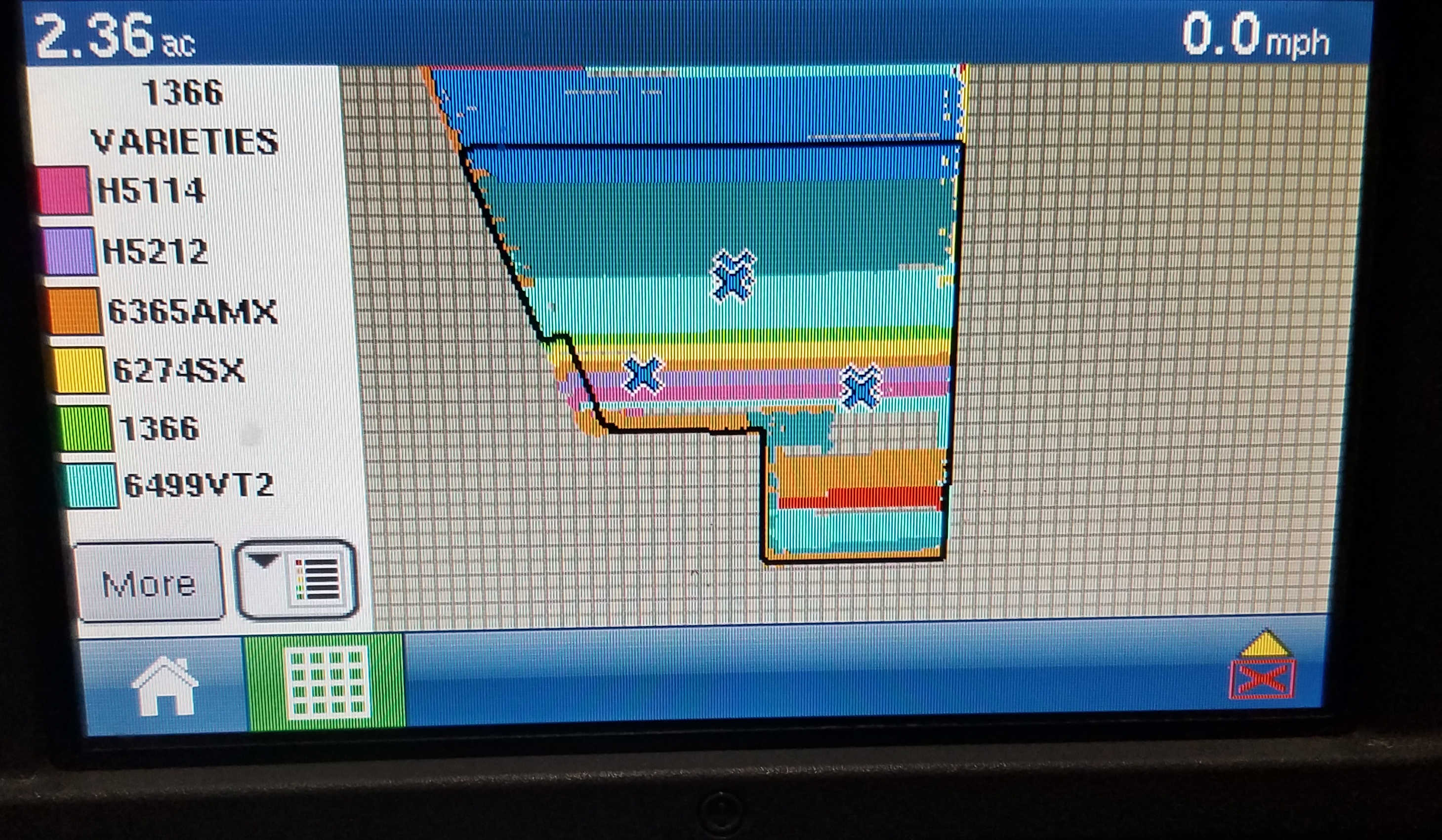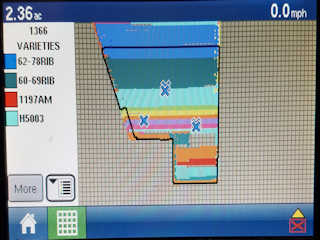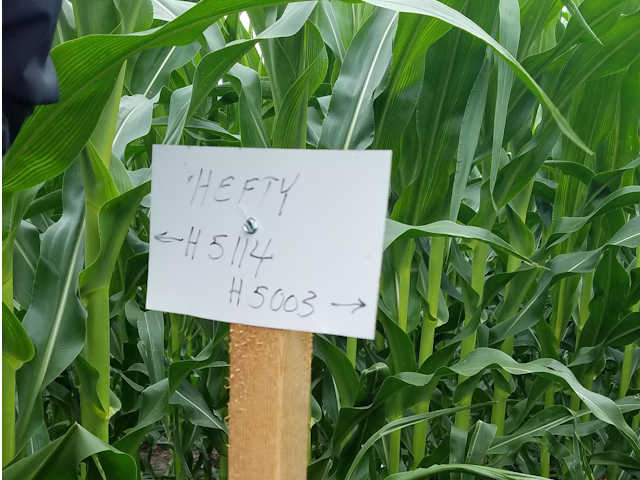 As planted
As planted
|
 As planted
As planted
|
 24 rows marked by signs
24 rows marked by signs
|
After studying multiple options for variety tests, I settled on planting 24 rows of each variety. With the 12 row planter, it was simply
one round. The test area starts in the middle of my east field just south of where the Dekota Access Pipeline crosses the road. With different
soil conditions and the 150 foot strip from the pipeline I felt I would need the 1/4 mile long rows to have consistent areas on the yield monitor at harvest.
I flagged the edges of each variety as I went. It took a whole day to set up the plot area because I would take off all 12 seed boxes and open up
the seed meter to remove the seeds as I changed varieties.
I selected the varieties based on area trial results from 2017. The top varieties chosen are Agrigold 6499, Dekalb 60-69 and 62-78, Pioneer 1197 and 1366, and Beck's 6274 and 6365.
Also Hefty Seeds provided a bag each of their H5212, H5114, and H5003 varieties to push their seed. H5003 is a much shorter season corn at 100 days and this seemed like an interesting
thing to try.
June 25th: I took measurements of stalk width, tallest leaf, widest leaf, and population from 12 areas covering my variety test plot.
Click here for Results All varieties looked healthy and quite tall. All had some striping on the newest leaves which may caused by the
frequent rains, lack of sunshine, or maybe a nutrient shortage. I took 2 soil samples and a leaf sample to sent to a lab for analysis.
Paul Helland from Hefty Seeds came in the afternoon and inspected their varieties in my test plot for general plant health, root and stalk strength, and population. Paul has been
instrumental in teaching me key agronomics. (I attended 2 soil clinics put on by the Hefty brothers that I would highly recommend to new and long time farmers. I got to see research on
national corn yield contest winners and data showing how much nutrients are needed for high yields.) Back to Paul and the afternoon. Paul dug up a plant of each of their 3 varieties,
looking at root structure and growth. He split the stalk lengthwise and checked for health conditions. Stripping back the leaves, we found the tassel quite developed and also found an
ear - 3/4 inch long at this stage.


 As planted
As planted
 As planted
As planted
 24 rows marked by signs
24 rows marked by signs